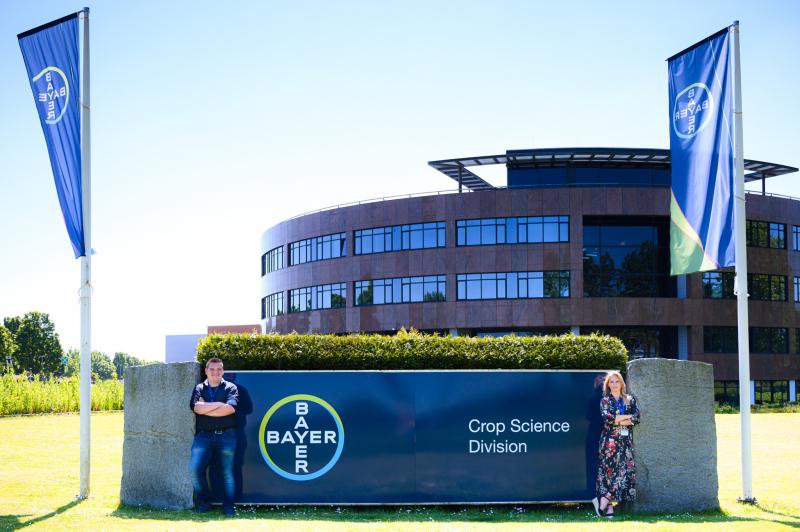Bayers Long Road to Accountability for Historical Environmental Damage
Bayer’s journey toward accountability has been a long and tumultuous road, punctuated by mounting lawsuits that stem from its historical environmental practices. The company’s legacy as a major player in the agricultural and pharmaceutical industries is now overshadowed by allegations of negligence concerning toxic chemicals like PCBs, which have persisted in ecosystems and local communities for decades. plaintiffs have united to seek justice, highlighting the severe health implications and environmental degradation caused by Bayer’s past operations. As legal battles unfold, the potential for billions in payouts looms large, pressing the company to confront the fallout of its actions.
Central to Bayer’s challenges is the growing scrutiny over corporate responsibility and sustainability. Experts and activists argue that this situation underscores a critical need for stricter regulatory oversight in the chemical industry. The implications of the company’s actions resonate beyond legal fees and settlements; they provoke broader conversations about environmental justice, corporate clarity, and the necessity for ongoing environmental remediation. As Bayer navigates its financial obligations, its efforts to rectify its environmental footprint will be closely watched, marking a pivotal chapter in the ongoing saga of corporate accountability in the face of ecological disaster.
The Financial fallout: Understanding the Billions in Liabilities
The implications of Bayer’s decades-long use of hazardous chemicals are reverberating throughout the financial landscape, leaving the company grappling with considerable liabilities. Estimates suggest that Bayer could face payouts reaching into the billions, with many legal battles centered on the long-term health consequences for individuals exposed to toxic substances like PCBs and glyphosate. The burden of compensation is compounded by the legal complexities surrounding these cases, which span multiple jurisdictions and regulatory frameworks. Analysts predict that the ongoing litigation could pressure Bayer’s financial stability, leading to a reevaluation of its investment strategies and operational capabilities.
As the company navigates these choppy waters, several factors will shape the scope of its financial responsibilities:
- Legal settlements: The potential for large settlements continues to grow as cases progress through courts.
- Litigation Costs: The expenses associated with defending against numerous lawsuits can substantially deplete resources.
- Regulatory Fines: Potential penalties imposed by environmental agencies for noncompliance add another layer of financial risk.
- Market Reactions: Shareholder confidence may wane in light of negative publicity and financial forecasts,impacting stock prices.
the long shadow of liability from past practices serves as a warning to corporations about the potential repercussions of environmental negligence. Bayer’s situation highlights the critical need for companies to prioritize enduring practices and consider the long-term ramifications of thier operations on both public health and their financial bottom line.

Restoring Trust: Strategies for Bayer to Address Stakeholder Concerns
As bayer navigates the turbulent waters of financial and reputational fallout from its long-standing environmental issues, it must adopt comprehensive strategies to mend its relationship with stakeholders. Transparency will play a crucial role; the company should commit to openly sharing information regarding its environmental practices and remediation efforts. This includes regular updates on progress and setbacks, as well as engaging with independent third parties to audit its initiatives. Establishing clear channels of dialog with affected communities will also foster a sense of involvement and trust, allowing stakeholders to voice their concerns and receive timely responses.
Moreover, investing in community restoration projects can significantly enhance Bayer’s standing. By partnering with local organizations and environmental groups,the company can demonstrate its commitment to repairing damages and supporting affected areas. Providing education and resources about sustainable practices will further reflect Bayer’s dedication to corporate responsibility. Implementing these strategies not only addresses immediate stakeholder concerns but also lays a foundation for long-term trust, allowing Bayer to emerge as a leader in corporate accountability in the face of past missteps.

Future-Proofing Operations: Recommendations for Sustainable Practices and Compliance
As companies like Bayer face the repercussions of their environmental legacies, it is indeed essential for businesses across industries to embrace sustainable practices that not only mitigate risks but also comply with evolving regulations. Future-proofing operations begins with a thorough assessment of existing practices, focusing on minimizing ecological footprints and enhancing corporate responsibility. Investing in clean technologies, shifting to renewable energy sources, and implementing robust waste management systems are key strategies that can help organizations stay ahead of compliance and public scrutiny. These proactive measures not only protect against legal repercussions but also resonate positively with consumers increasingly concerned about sustainability.
Moreover, establishing a culture of transparency and accountability within organizations will further strengthen their resilience against future liabilities. This can be achieved by conducting regular audits, engaging stakeholders in dialogues about sustainability goals, and training employees on compliance protocols. Forward-thinking companies should also consider collaborating with environmental organizations to ensure adherence to best practices,while also enhancing their brand reputation. By creating a roadmap that emphasizes sustainability and strict compliance,businesses can safeguard their interests and contribute to a healthier planet,turning potential hazards into opportunities for innovation and growth.